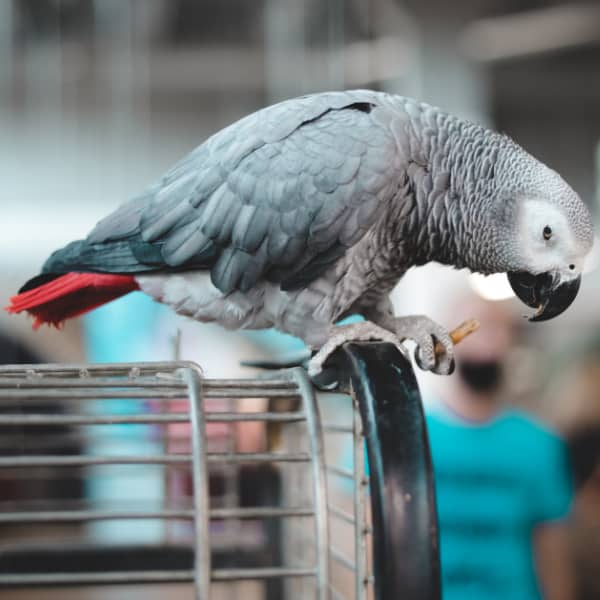Last Updated on by Mitch Rezman
From Wikipedia, the free encyclopedia.
Wrought iron is a very pure form of commercial iron, having a very small carbon content. It is tough, malleable, ductile and can be easily welded. However, it is too soft to make blades and swords. When formed into bars, it is known as “bar iron”. Wrought iron has been used for thousands of years, and represents the “iron” that is referred to throughout history.
Wrought iron was originally produced by a variety of methods today known as a bloomery. Bloomeries used charcoal-heated smelters, typically in the form of small pots or ladles, into which the ore was poured and then covered with a thin layer of charcoal. Air was blown onto the charcoal after lighting it on fire. The heat produced would melt the ore. As the ore melted it would be reduced (ore is iron oxide, or rust), mixing with the charcoal to release carbon dioxide. This way little carbon entered the iron directly.
In a bloomery, the fire does not get hot enough to melt the iron completely, so you are left with a spongy mass containing iron and silicates from the ore; this is iron bloom from which the technique gets its name. The bloom was then mechanically worked to break off the masses of slag and impurities. This process gives rise to the name “wrought”, as the iron was pounded, twisted, and folded. As a result of this process, many strands of slag are mixed into the metal. These slag inclusions give it a “grain” like wood, and distinct look when etched. Also due to the slag, it has a fibrous look when broken or bent past it’s failure point.
The introduction of the the much less expensive coke for use with the blast furnace by Abraham Darby I in 1709 changed ironmaking and replaced charcoal. Not only was the fuel much cheaper, but it also could be burned in a “lump” instead of a thin sheet, allowing the furnaces to be much larger. Soon iron prices were dropping rapidly as production shot up.
However the product of a blast furnace, pig iron, had a very high carbon content and was very brittle. In order to use it in ironmongery, it had to first be converted to a form similar to what the bloom/wrought process produced. This process took time to develop, but by the 1750s a number of oxides had been identified that would react with the excess carbon to produce carbon dioxide, which bubbles out.
Historically, this would be followed by faggoting. Wrought iron which had been faggoted twice was referred to as “Best”; if faggoted again it would become “Best Best”, then “Treble best”, etc.
Faggoting resulted in impurities within the metal ending up as long thin inclusions, creating a grain within the metal. “Best” bars would have a tensile strength along the grain of about 23 tons per square inch (317 MPa). “Treble best” could reach 28 tons per square inch (386 MPa). The strengths across the grain would be about 15% lower. This grain makes wrought iron especially tricky to smith, as it behaves much like wood grain–prone to spontaneous splitting along the grain. In old, very rusted pieces of wrought iron, the grain is revealed, making the iron bear a striking resemblance to reddish-brown wood.
Wrought iron products as described in routine commercial transactions usually refer to mild steel products which are also described as ornamental iron work.
Word Origin: The word “wrought” is the old past tense of the verb to work. As irregular past-tense forms in English have historically been phased out over long periods of time, wrought became worked. Wrought iron literally means Worked iron.
Author Profile
Latest entries
 Bird BehaviorJune 13, 2025Why Do Some Parrots Struggle in Captivity?
Bird BehaviorJune 13, 2025Why Do Some Parrots Struggle in Captivity? Bird & Parrot AnatomyJune 12, 2025Why are Budgerigars Called The Colorful Parrots?
Bird & Parrot AnatomyJune 12, 2025Why are Budgerigars Called The Colorful Parrots? Bird & Parrot AnatomyJune 12, 2025How Do Monk Parakeets Talk to Each Other?
Bird & Parrot AnatomyJune 12, 2025How Do Monk Parakeets Talk to Each Other?  Bird BehaviorJune 10, 2025How Cockatoos Learned to Use Drinking Fountains Like People
Bird BehaviorJune 10, 2025How Cockatoos Learned to Use Drinking Fountains Like People




